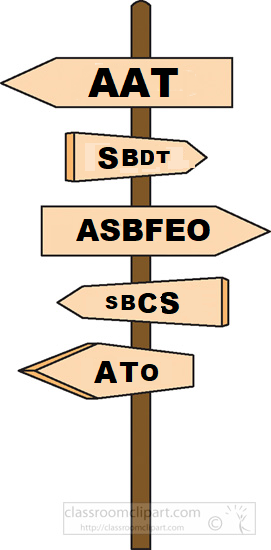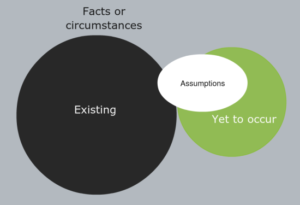Labor’s Fairer Tax System plan
The ALP’s Andrew Leigh and Chris Bowen announced their A Fairer Tax System for Millions, Not Millionaires plan on 13 May 2017. The plan is comprised of a number of laudable and progressive policy announcements including transparency improvements that will impede tax avoidance by wealthy taxpayers and multinationals.
These policies are:
- $3,000 cap on deductions for managing their tax
affairs for individuals.
- Public reporting of country-by-country reports.
- Whistleblower protection and rewards.
- Mandatory shareholder reporting of tax haven
exposure.
- Public reporting of Australian Transaction
Reports and Analysis Centre (AUSTRAC) data.
- Government tenderers must disclose their country
of tax domicile.
- Develop guidelines for tax haven investment by
superannuation funds.
- Publicly accessible registry of the beneficial
ownership of Australian listed companies.
- Australian Taxation Office disclosure of
settlements and reporting of aggressive tax minimisation.
The first measure, which this blog post concerns, is a proposed cap of $3,000 on the income tax deduction for managing personal tax affairs. There is no doubt this cap will restrict tax deductibility, which is substantially the funding by other taxpayers, of wealthy taxpayers’ tax professional costs of devising ways to avoid paying Australian tax.
Why an arbitrary $3,000 cap?
Still the $3,000 cap is arbitrary and there is, somehow, a disconnect in the announcement between the proposed cap and the millionaires against whom it is targeted. Why is the cap $3,000 rather than $30,000? My point is that it is not so unusual for ordinary taxpayers, particularly property owners who are not millionaires at whom the Fairer Tax System proposals are directed, to rack up tax professional costs of more than $3,000 for managing their tax affairs in an income year. The $3,000 cap includes tax agent costs for annual tax return preparation and lodgment so the remaining cap to deal with remaining tax difficulties or obligations will be something less than $3,000. So, although the measure will achieve its aim to curb deductibility of these costs to millionaires, there will be taxpayers who are not millionaires who will be collaterally caught with non-deductible tax professional costs in excess of the cap.
It is not so clear that the cap has been designed by someone who has real experience of seriously high individual tax professional costs and of situations where they may happen. Sure, all being well, a salary earner who owns real estate and who engages a tax agent, who charges moderately, will have tax professional costs in an income year comfortably under the cap. However, the salary earner with tax difficulties out of the ordinary may find himself or herself with a need to take a considered custom professional tax advice or to have his or her tax advisor non-prejudicially apply for a binding private ruling to protect himself or herself under the self assessment system.
The self assessment system
Out of the ordinary doesn’t mean tax avoidance is going on. Under the self assessment system a taxpayer is responsible for correct reporting and filing of tax information and severe penalties and interest apply if the taxpayer makes an error and a tax shortfall is assessed. If the taxpayer has an activity or activities where the tax treatment is unclear then it is the taxpayer who must ensure his or her return or other statements to the Australian Taxation Office (ATO) complies with tax law adopting, in the least, a reasonably arguable position on items in the return or statements that are contentious.
Something over $2,000 is not a big budget for obtaining a tax advice letter or a position paper or for professional preparation of an application for a private binding ruling or a complex objection. Often issues an individual can face can take a tax professional a couple of days or more to do thoroughly.
It can be costly just to understand obligations imposed by government
Not so long ago I was briefed to give tax advice to an owner of a heritage building about to enter into a sale of “transferable floor space” in compliance with local government heritage laws. The interaction of the relevant capital gains tax (CGT) and goods and service tax (GST) laws with property, environment and local government laws, cases and public rulings took considerable time to work through even in the absence of any live dispute about these matters with the ATO. $2,000 would have been a fraction of fees for the time needed to give advice so that the client understood the client’s CGT and GST obligations on the sale . The correct application of CGT events and tax rules that apply in this client’s situation are notably unclear and difficult and, in its rulings, the ATO takes positions which some may view as confused and ambiguous. A withering array of laws applied to this heritage building owner.
Each of these laws, considered separately, benefit or aim to benefit government, society and thus other taxpayers by the contribution of taxes, the stimulation of commerce and the preservation of heritage buildings. But is it fair for society to impose such a multitude of obligations on a not necessarily wealthy building owner yet severely reduce society’s contribution to the owner’s costs of compliance with them?
You see much of my work, and the work of many other tax advisors who act for clients who are not necessarily wealthy, is just to advise or explain how the tax law applies to them and what their position is. Generally, as the tax laws have been tweaked and greatly expanded over time, the tax laws do not present exploitative opportunities to ordinary taxpayers for avoidance. There are, of course, exceptions.
The CGT provisions are a good example of tax laws that are necessarily intricate and complex. $2,000 in professional advice costs just to understand a CGT position in an advice from a CGT expert won’t go far. The CGT rules can apply, and severely, to taxpayers who own property, securities and other valuables. If the owner dies or is a non-resident the complexity can ratchet up. Not all of the aforementioned are millionaires.
It can be costly to get a ruling or guidance from the Australian Taxation
Office
It is frequently the case that an ordinary taxpayer is unable to articulate, or would be disadvantaged having to personally articulate, a technical capital gains tax problem to the ATO without professional assistance in order to obtain guidance or a binding private ruling from the ATO. So an ordinary taxpayer can be justified in seeking substantial tax professional help applying for a private binding ruling from the ATO. If a binding private ruling adverse to the taxpayer is issued by the ATO the taxpayer may seek to dispute the ruling and still further tax professional help is needed. The taxpayer’s professional tax advisor may need to attend the ATO or prepare an objection or appeal.
The intractability of many tax problems, notably capital gains tax problems, is usually not the fault of the taxpayer but is a feature of complex tax law seeking to impose tax obligations in a wide diversity of situations fairly on the tax paying community.
Costly tax problems not of concern to wealthy taxpayers
A taxpayer of modest means suffers an injury at work and receives an ongoing insurance payout. This taxpayer is the opposite of a millionaire. Still the taxation of the insurance payout gives rise to the income versus capital conundrum on which the Australian income tax system continues to rely. The payouts fall through the cracks of types of insurance payout that are afforded tax exempt status under the Income Assessment Acts 1936 and 1997. If the payouts are capital then capital gains on personal injury payouts are exempt from CGT so there is a lot of tax at stake if the payouts should be treated as capital rather than as assessable income.
Pursuing capital treatment of the payouts is not tax avoidance by the wealthy. Inevitably ruling, objection and appeal costs of disputing that the payouts are not assessable income are likely to be way in excess of $3,000.
These kinds of cases appear often enough in published Administrative Appeals Tribunal reports, and there are plenty below the visible tip of that iceberg to show that they still remain a frequent and expensive kind of tax dispute for injury victims. To deprive injury victims of tax deductibility for costs of their tax dispute to target other less deserving taxpayers is tough indeed on taxpayers affected. It is of no consolation to an ordinary taxpayer who can’t claim most of their seriously high tax professional costs that he or she is one of a number of less than 90,000 taxpayers who incur more than $3,000 in tax professional costs each income year.
Australia’s tax system abounds in these kinds of structural challenges. Whether or not an activity of a taxpayer amounts to “an adventure in the nature of trade” and consequently an enterprise carried on by a taxpayer attracting a GST obligation, is another good example of a tax uncertainty a taxpayer who is not a millionaire may find costly to solve in their case and may not solve without taking valuable professional assistance.
The cap binary and alternatives to better target the cap
So if $3,000 might not be enough of a cap to ensure fair operation of the cap, why impose a binary limitation with such a confidence in the announcement that its impact will be on millionaires?
The small business capital gains tax measures themselves show that the demarcation between “small” and bigger business is not necessarily easily achieved as shown by the unwieldy $6 million net asset test. A demarcation between ordinary and “millionaire” taxpayers to qualify for exemption under the cap may be similarly difficult. But might it be possible to devise a targeted cap which looks at the character of the professional tax costs of a taxpayer of managing their personal tax affairs so that the cap operates more equitably?
For instance could costs of professional tax work just directed at establishing the position of a taxpayer under certain tax laws on non-contrived circumstances be exempted from the cap? Most capital gains tax rules could be within that exemption. If the professional work addressed specific anti-avoidance measures, the general anti-avoidance provisions or exploitative tax planning the professional work could be “tainted” by that consideration and so fall outside of the exemption. One difficulty is that some sort of “chinese wall” solution may be needed so privileged thus confidential tax advice could be considered to verify whether the costs of the professional tax law assistance is exempt from a targeted cap on costs of managing tax affairs.
It may be possible to conveniently go through all of the (many) tax laws and classify those where issues and disputes arising from them are benign, in an avoidance context, as exempt from the cap. Often wealthy taxpayers and their advisers have little interaction with these laws and so exempting them would not give wealthy taxpayers any advantage. That would better achieve the aim of the Fairer Tax System plan.








